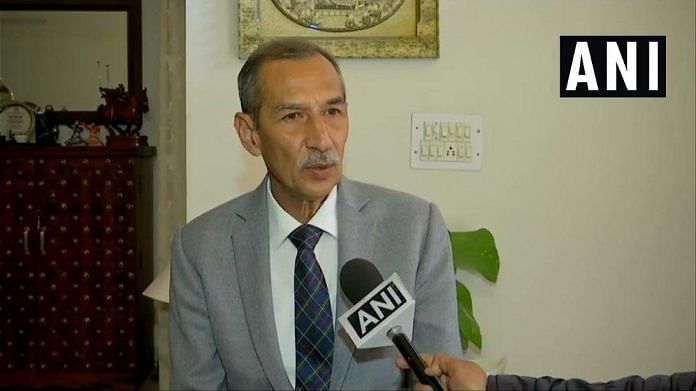New Delhi: Given the changing nature of the India-China border, it would make sense to place the Indo-Tibetan Border Police (ITBP) under operational control of the Army, former Northern Army Commander Lt Gen Deependra Singh Hooda (retd) said Wednesday.
Hooda, speaking at a webinar organised by Delhi-based Institute of Chinese Studies, said: “We are looking at responding to a regular military (on Chinese side). There are limitations in the way ITBP can respond, not because the soldiers or officers are lacking, but because they don’t have the organisational structure and the capability to react to it.”
Launched in the wake of the 1962 Sino-Indian War, the ITBP is India’s first line of defence at the Line of Actual Control (LAC) and the Army remains behind it.
The ITBP guards the 3,488 km China frontier, which passes along Arunachal Pradesh, Sikkim, Uttarakhand, Himachal Pradesh and Jammu and Kashmir.
Hooda’s comments at the webinar come in the wake of the first anniversary of the Galwan Valley clash in Ladakh, in which 20 Indian soldiers were killed on 15 June 2020.
ThePrint was a digital partner of the webinar.
Also read: Chinese counterpart listening, Rajnath calls for freedom of navigation in South China Sea
Army is needed at ‘unsettled’ borders
Hooda said that the Army is not needed at “settled” borders like with Bangladesh.
“But where you have unsettled borders, like the Line of Control and LAC where you are likely to see the regular Army from the other side reacting, then it would be better to give the management of the border to the Army,” the Lt Gen said.
This would not entail the Army raising its own structures but rather building capabilities of the ITBP to ensure smoother, coordinated response in the event of a crisis.
ITBP, one of five Central Armed Police Forces (CAPF), comes under the Ministry of Home Affairs. The Ministry of Defence, however, is also responsible for its units, often resulting in a “turf war”.
Hooda also said that because of the presence of two ministries, raising ITBP’s capabilities has been done in an “uncoordinated” and “wasteful” manner.
He said that, for example, while there were seven to nine ITBP battalions in Ladakh, the headquarters of the Deputy Inspector General (DIG) or the Inspector General (IG) wasn’t in Ladakh until 2019. “As far as the Army is concerned… the corps commanders sit in Ladakh,” he added.
ITBP treated like a ‘poor cousin’
During the webinar, Jabin T. Jacob, associate professor at Department of International Relations and Governance Studies at Shiv Nadar University, said the ITBP is treated like a “poor cousin” by the central government. He spoke about the changing mandate of the ITBP and leadership issues that plague the institution.
“At the DIG rank, 80 per cent of the officers come from the ITBP cadre and 20 per cent are IPS officers,” he said. “One step above at the IG rank, 50 per cent are IPS officers and the rest are ITBP cadre. The DGP, the highest position, is always an IPS officer.”
He added that promotions are not handed out on time, cadre reviews do not take place as often as necessary and a wide gap of experience exists between what an ITBP cadre needs for a top post and vice-versa for an IPS officer.
In the past, pay parities between IPS and CAPF officers were also a point of conflict that led to years of litigation.
Asked about combining capabilities of the Army and ITBP at the China border, Jacob remarked that the ITBP would work better with the Army than under its own top brass.
Despite undergoing rigorous training to man the mountainous terrain along the LAC, ITBP troops are often assigned to non-specialised tasks, he said.
Criticising the MHA, Jacob said the political leadership “doesn’t care where the ITBP is posted”.
“In 2017, a bunch of ITBP units were pulled in to take care of the Amarnath Yatra, then they remained in Kashmir due to some disturbances,” he said. “Soon after, there were local elections so they were again deployed in the same area… Then when the units were relieved, they went back to their hardship posting. There was no R&R”.
R&R is a military abbreviation for “rest and recuperation” or “rest and relaxation”.
(Edited by Arun Prashanth)
Also read: A year since Galwan, China drags its feet on disengagement at four friction points in Ladakh




